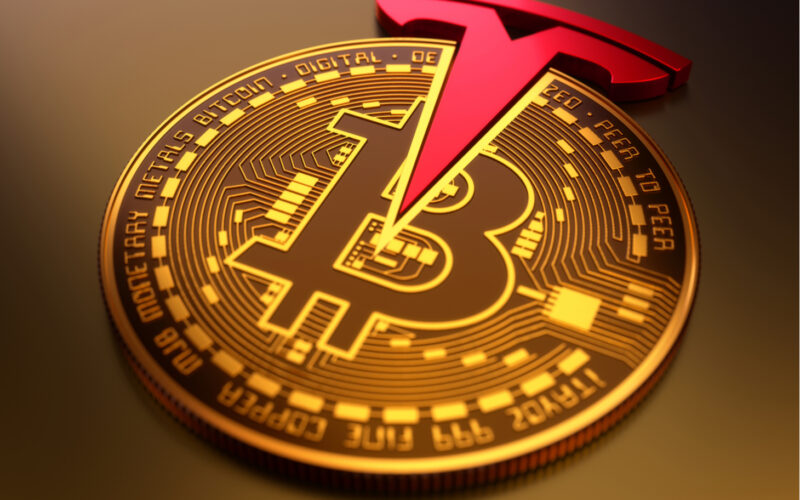Following a sharp correction earlier this summer, bitcoin has since recovered and is pushing towards its previous highs. The crypto faithful are not merely relieved, but are again promoting the narrative that not only is bitcoin superior to rapidly inflating fiat currencies, but is the most perfect form of money ever designed.
They have a point. Several even. Bitcoin is not a currency imposed on households and businesses by a government or any other authority. Bitcoin is not controlled or (mis)managed by a central bank possessing a theoretically unlimited power to create it. Rather, its supply is regulated by its own algorithm and is strictly limited. If used sufficiently cryptographically, its users are arguably completely anonymous. And bitcoin is, by design, highly decentralised.
The above qualities all contribute to making bitcoin attractive to many, not only as an investment, but as an actual alternative form of money that could and should be used as such.
Some go further still, touting the alternative currency’s advantages in a manner that borders on religious zeal. Religious zealotry, however, has a way of blinding adherents to any inconsistencies, contradictions or imperfections in their belief system, whatever they might be. All the world’s major established religions have endured cycle after cycle of such “inconveniences” being discovered, only later to be explained, modified, adjusted or re-interpreted in some way.
But there is a big difference between advocating for a religion, which reduces belief to a system based on faith, and advocating for something to be used as practical, everyday money. Indeed, money is perhaps the most profane conceivable opposite of the sacred and divine. Money needs to work in the real, physical world on a day-to-day basis. It is constantly bumping up against practical reality.
As we know, the best, most direct way to make sense of reality is to use some variation of the scientific method: make observations, conceive hypotheses, design experiments, make further observations, and so on, attempting to zero in on what are found to be stable, predictable, repeatable cause-and-effect associations of some kind.
Applying such a method to bitcoin, we can evaluate its various properties and the extent to which they do, or do not fulfil the theoretical bases for good, sound money. When one does so, one discovers that there is one aspect where bitcoin comes up short. This is the fact that bitcoin’s high decentralisation comes with high costs in the form of energy consumption. Those costs are real and must be borne by someone within the bitcoin network.
Thus, an energy cost-benefit analysis is required in order to fully evaluate bitcoin’s suitability as an alternative money. The zealots may dismiss such criticism, purely scientific as it is, due to their religious fervour. But there are more practical bitcoin advocates out there who are working on methods to reduce bitcoin’s high energy costs, in particular by creating centralising networks or nodes that sit on top of the blockchain, rather than within it.
These nodes, depending on their design, can be orders of magnitude more energy-efficient than bitcoin. While that is indeed welcome, it comes at another cost: a loss of bitcoin’s decentralisation. Nodes present points of possible failure. They are entities that must be designed, built and operated by some person or organisation. As with crypto exchanges, they are subject to potential abuse, misuse or fraud. They might even be subject, in future, to regulation or taxation of some kind.
My suspicion is that, going forward, more and more bitcoin advocates will see this energy cost versus decentralisation trade-off for what it is, and may begin to hedge their bets. That is, they may start to dabble in alternatives, including perhaps both “proof-of-stake” as well as “proof-of-work” coins. There is plenty of competition out there.
What they are unlikely to do, however, is to somehow become re-enamoured of that which they were fleeing in the first place when they became involved in bitcoin: fiat money.
Ever since 2009, when the first bitcoin block was mined, fiat money has gone from weakness to weakness. Its supply continues to explode, most recently as a response to the Covid-related economic downturn. Debt burdens have continued to soar. Financial stability has not improved and might well have become worse. Interest rates remain near zero or even negative. And now, inflation rates have risen to levels higher than most bitcoiners have ever experienced.
No, as they hedge their bets, bitcoiners won’t flee back into fiat. But what of the other alternatives? Might bitcoin be a “gateway” currency to something else entirely?
There is one alternative in particular that possesses nearly all the desirable characteristics of bitcoin: gold. Physical gold is not imposed on anyone by government or other authority. It is not (mis)managed by a central bank. It is strictly limited in supply, which tends to grow at only about 1-1.5% per year. It is highly decentralised, in many cases hanging around necks and wrists of individuals all over the world.
Now, jewellery may not be readily usable as money, but it doesn’t take much to monetise it if desired. In the meantime, it serves as an excellent store of value, and one with essentially zero carrying costs. The same is true of bullion, which can be stored securely in a safe jurisdiction for a mere fraction of a per cent per annum – less than a typical bitcoin transaction cost.
Now that bitcoin’s market capitalisation has grown to such a large amount – nearly $1 trillion – any meaningful diversification out of bitcoin into gold could have a significant effect on the gold price, due to gold’s high supply inelasticity. Unlike with corporate stocks or bonds, nature doesn’t respond to rising gold demand by “issuing” more. Nor does gold suddenly make it easier or less costly to locate, extract and refine gold ores as the price rises.
However, as per above, the existing, above-ground gold stock costs very little to maintain. The low secure storage cost of bullion stands in sharp contrast to the high costs of maintaining the bitcoin network. High costs imply high energy consumption.
Energy consumption, as we all know, can degrade the environment. Hence there is also a “green” case to make for gold: that owning it or potentially using it as money is far more energy efficient, hence far “greener” than using bitcoin. As some bitcoiners are no doubt also supportive of green energy and technology generally, this group in particular might be drawn to gold for this reason, in time.
It might seem ironic that gold, the oldest, most venerable money known to man, is perhaps a superior monetary technology to bitcoin. Yet for all its mathematical elegance and the religious fervour it attracts, bitcoin cannot change the laws of physics and nature.
Only God can do that. And while I can’t rule it out entirely, I doubt that God is a bitcoin advocate.
John Butler
Author, The Golden Revolution, Revisited



